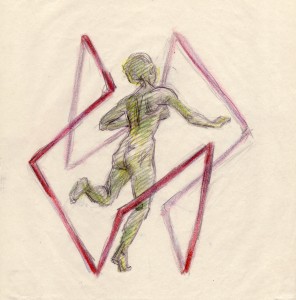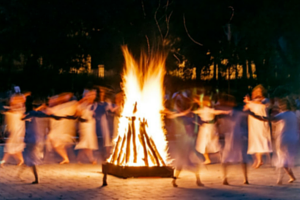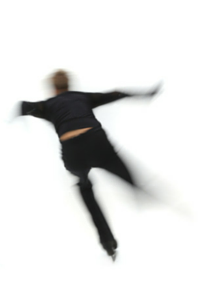 “We can understand all bodily movement as being a continuous creation of fragments of polyhedral forms,” Laban claimed. We set out to test this in the Prototypes project.
“We can understand all bodily movement as being a continuous creation of fragments of polyhedral forms,” Laban claimed. We set out to test this in the Prototypes project.
As I note in The Harmonic Structure of Movement, Music, and Dance, Laban’s polygonal rings are best thought of as “spatial ‘prototypes’ from which dance sequences can be constructed, just as musical scales are ‘model’ tonal sequences from which melodies and harmonies are composed.” Just as only part of a scale may be found in a musical composition, Laban asserts that fragments of his polygonal prototypes can be found in choreographed movements.
Laban’s assertion was first tested by Valerie Preston-Dunlop. In 1979 she found fragments of choreutic forms in Martha Graham’s Lamentation and Diversion of Angels and in Jose Limon’s Choreographic Offering.
We found fragments of Laban’s prototypes in a technique class combination choreographed by OU faculty Travis Gatling. In this sequence, he traces the front edge of the horizontal plane with both arms, then swings the right arm in what at first seems to be a cycle in the sagittal plane. Closer examination reveals this to be a fragment of a peripheral five-ring, for the arm veers out of the sagittal plane to side high, right back middle, and side low before coming to rest in forward middle. This fragment of a five-ring captures the normal range of motion for the arm more accurately than a purely sagittal cycle.
We also found fragments of Laban’s prototypes in improvised movement. As OU faculty Tresa Randall repeatedly tilted and turned, her arms traced slanted circles identified by Laban as “girdles.” From these tilted spins, Tresa also stabilized temporarily by stretching along a diameter of either the sagittal or vertical plane.
Unexpectedly, we found further corroboration of Laban’s observations in Marina Walchi’s improvisation. Find out more in the next blog.


 As any performer who has ever worked with
As any performer who has ever worked with  Polar triangles, axis and girdle scales, primary scales, and the A and B scales – these were the Laban prototypes we wanted to study. Thus the research project began with a crash course in space harmony for three Ohio University dance faculty (Travis Gatling, Tresa Randall, and Marina Walchi).
Polar triangles, axis and girdle scales, primary scales, and the A and B scales – these were the Laban prototypes we wanted to study. Thus the research project began with a crash course in space harmony for three Ohio University dance faculty (Travis Gatling, Tresa Randall, and Marina Walchi). In 2008, Professor Madeleine Scott and I ran a
In 2008, Professor Madeleine Scott and I ran a 


 In the preface to Choreutics, Laban defines “choreography” as the “designing or writing of circles.” While we use the word today to designate composing dances, Laban was obviously familiar with the origins of the term, which come from two Greek words – khoros and graphein.
In the preface to Choreutics, Laban defines “choreography” as the “designing or writing of circles.” While we use the word today to designate composing dances, Laban was obviously familiar with the origins of the term, which come from two Greek words – khoros and graphein. In Choreutics, Laban mentions in passing a dizzying array of subjects —
In Choreutics, Laban mentions in passing a dizzying array of subjects —